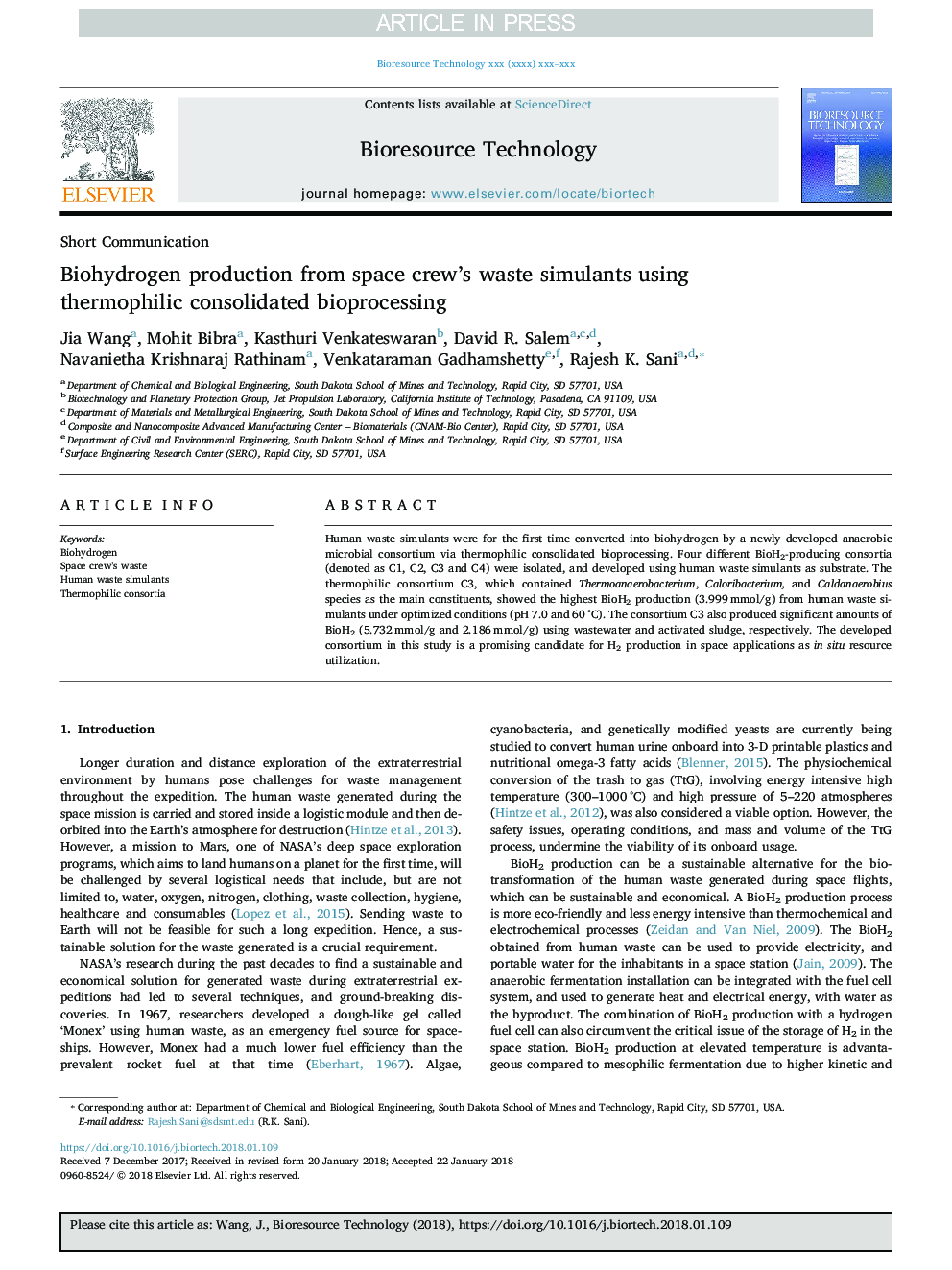| Article ID | Journal | Published Year | Pages | File Type |
|---|---|---|---|---|
| 7068104 | Bioresource Technology | 2018 | 5 Pages |
Abstract
Human waste simulants were for the first time converted into biohydrogen by a newly developed anaerobic microbial consortium via thermophilic consolidated bioprocessing. Four different BioH2-producing consortia (denoted as C1, C2, C3 and C4) were isolated, and developed using human waste simulants as substrate. The thermophilic consortium C3, which contained Thermoanaerobacterium, Caloribacterium, and Caldanaerobius species as the main constituents, showed the highest BioH2 production (3.999â¯mmol/g) from human waste simulants under optimized conditions (pH 7.0 and 60â¯Â°C). The consortium C3 also produced significant amounts of BioH2 (5.732â¯mmol/g and 2.186â¯mmol/g) using wastewater and activated sludge, respectively. The developed consortium in this study is a promising candidate for H2 production in space applications as in situ resource utilization.
Keywords
Related Topics
Physical Sciences and Engineering
Chemical Engineering
Process Chemistry and Technology
Authors
Jia Wang, Mohit Bibra, Kasthuri Venkateswaran, David R. Salem, Navanietha Krishnaraj Rathinam, Venkataraman Gadhamshetty, Rajesh K. Sani,
